There is a lovely song called "Beijing, Beijing" that has become very popular in China over the past few years due to its emotional lyrics and simplicity. Ambiguous enough so that the song isn't corny, but specific enough so that you get a sense of the very human feelings one experiences about place and space, the song shows the singer's connection to a city (probably in this case the singer had lived or been born there.) I would liken that song to my feelings toward Nanjing (you could even exchange the words- it would still fit!) For a number of reasons, I really felt a strong connection to this city. If I were to ever return to China and teach on a temporary contract (which is very possible after I graduate from UBC), living and working in the city of Nanjing would be my first choice by a long stretch.
I liked this city so much for several reasons:
- It's size. Not too big of a city but certainly large by my small sized Vancouver standards. The place is beautiful at night, filled with lights and dazzling megamalls, shopping centres, and blocks upon city blocks of boutiques and restaurants, all interesting to walk through. It's also easy enough to learn the entire city since it's on a grid and it's not nearly as sprawled out or complicated as most other cities.
- The people. Everyone is super friendly there. There are tons of westerners, which means people don't stare at you and point or call you "laowei", and also there are more places to eat western foods. We enjoyed dinner on several occasions at Australian establishments, often enjoying steaks or Italian pasta for affordable prices. We even happened to find a really gripping magazine called The Nanjing Expat, a publication in English, of course, with really interesting news articles of concern about the expat community in Nanjing and general China news.
- The sites. Nanjing is known as a key historical city, critical for understanding Chinese history, both modern and ancient. Once known as Nanking, the city was one of China's former ancient capitals (Beijing=capital of the north, Xi'an= capital of the west, and Nanjing= capital of the south). Zhonghuamen or The Gate of China (Zhonghua= the Chinese translation of China which literally means "centre country" and men= entrance or gate) is also found near the middle of the city. The gate is absolutely stunning. Really more of a part of a large section of the wall that once surrounded the city 700 years ago to protect it, and the country, from invaders. Today, a canal borders the old part of the city and modern roads support traffic inside and out of the walls, an interesting metaphor for the "opening up" of China in the contemporary period. We walked up a few sets of stairs to stand atop the city walls and boy what a sight it was! We also visited Confucius Temple inside the old city and took a guided boat ride around the city canals. We also visited Purple Mountain and went on top of the seven story Pagoda that overlooks half of the city, walked around the historical sites there, and finally visited the honourable Dr. Sun Yat-Sen's mausoleum. Additionally, we visited the Nanjing Massacre Museum, the memorial for the hundreds of thousands of victims from the Japanese invasion and occupation of China in the 1930s and 40s, now known to most as "the rape of Nanking." Understanding what happened then is essential for gaining a more nuanced perspective on current Asian international relations and Japanese-Chinese relations today.
 The memorial was very well done. It moved my roommate to the point of actual tears by the end. It did a very good job of depicting the tragedies of the time and the cruelty of the Japanese toward the Chinese. It also finally gave me a good understanding of why many Chinese do not trust foreign powers, particularly colonizers like the British, French, and Americans, but most specifically the Japanese.
The memorial was very well done. It moved my roommate to the point of actual tears by the end. It did a very good job of depicting the tragedies of the time and the cruelty of the Japanese toward the Chinese. It also finally gave me a good understanding of why many Chinese do not trust foreign powers, particularly colonizers like the British, French, and Americans, but most specifically the Japanese.
At the end of the day, we could not figure out how to exit the darned museum and we had to climb over a gate since closing time was already over. Not letting go of the metal fence like I should have, I tore some muscle tissue in the palm of my right hand. It was bleeding internally and by the end of the day I had to tear open the uppermost layer of skin to prevent my skin from blistering. Painful! Thankfully, my hand has healed nicely since. How amazing the human body is.
 We tried to follow this path to the Mausoleum but we kept encountering fences blocking our way forward. It took hours to realize that we had to pay a small fee to get transported to the Mausoleum (how annoying- but this is the kind of frustration and confusion that foreigners will commonly encounter in China everywhere.) Keep posted for pictures of the Mausoleum next.
We tried to follow this path to the Mausoleum but we kept encountering fences blocking our way forward. It took hours to realize that we had to pay a small fee to get transported to the Mausoleum (how annoying- but this is the kind of frustration and confusion that foreigners will commonly encounter in China everywhere.) Keep posted for pictures of the Mausoleum next.














































































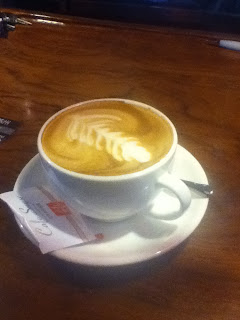












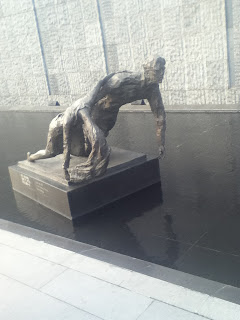




















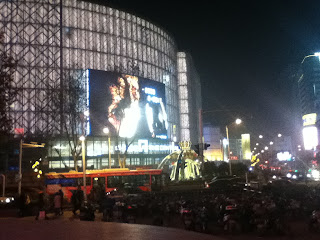


















































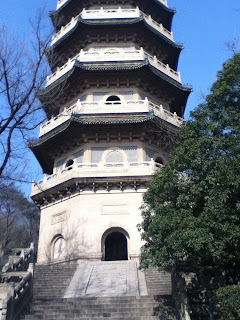
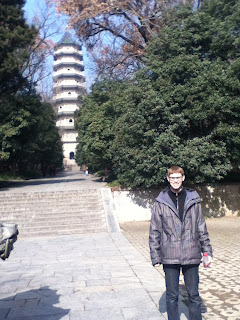














No comments:
Post a Comment